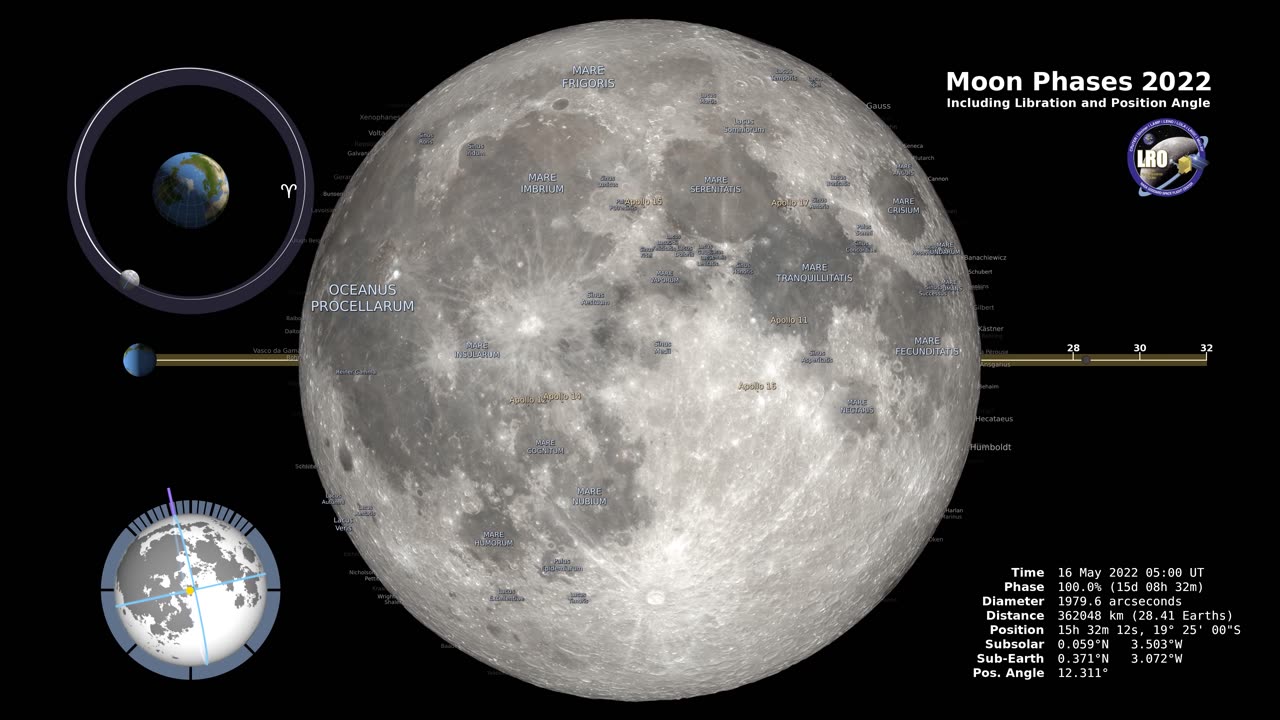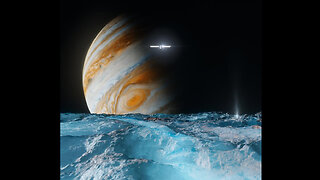Premium Only Content

Moon Phases As Seen In Northern Hemisphere
This 4K visualization shows the Moon's phase and libration at hourly intervals throughout 2022, as viewed from the Northern Hemisphere. Each frame represents one hour. In addition, this visualization shows the Moon's orbit position, sub-Earth and subsolar points, and distance from the Earth at true scale. Craters near the terminator are labeled, as are Apollo landing sites, maria, and other albedo features in sunlight.
The moon has been a source of fascination and intrigue for humans since time immemorial. Its luminescent glow, shifting shapes, and constant presence in our night sky have led to countless myths, legends, and scientific discoveries. This essay aims to elucidate the phases of the moon as seen from the Northern Hemisphere on Earth.
The moon's phases are a result of its orbit around the Earth and the alignment with the sun. The moon does not emit light; it reflects sunlight, and the different shapes we see, known as phases, are determined by the portion of the moon illuminated by the sun as viewed from Earth.
The lunar cycle starts with the New Moon, which is practically invisible to us because the side of the moon that's lit by the sun is facing away from Earth. After the New Moon, the moon moves into the Waxing Crescent phase, where a small sliver of the moon becomes visible as a crescent on the right side.
Following the Waxing Crescent, the moon enters the First Quarter phase. During this phase, the right half of the moon appears as a bright semicircle. This phase is often confused with the Half Moon, but it's actually just one quarter of the way through the lunar cycle.
The Waxing Gibbous phase comes next and is characterized by the moon being more than half illuminated but not yet full. The term 'gibbous' refers to the moon's convex appearance during this phase.
The Full Moon phase is when the moon is fully illuminated, presenting a breathtaking sight in the night sky. This happens when the Earth is located directly between the sun and the moon.
Post the Full Moon phase, the moon begins to wane, or decrease in illumination. The Waning Gibbous phase mirrors the Waxing Gibbous but on the left side. The Third Quarter follows, which, similar to the First Quarter, exhibits a semi-circular shape but on the left side.
The final phase is the Waning Crescent, where only a thin, left-side sliver of the moon is visible before it transitions back into the New Moon phase, and the cycle starts anew.
In the Northern Hemisphere, the right side of the moon is always the first to become visible and is also the first side to darken. The phases seem to shift from right (east) to left (west), opposite to that of the Southern Hemisphere, due to the difference in the viewing perspective from the two hemispheres.
In conclusion, the moon phases, as seen from the Northern Hemisphere, offer a fascinating glimpse of celestial mechanics, providing observers with a visual spectacle in the night sky and giving us a deeper understanding of our place in the cosmos.
Quality NASA Products & Gift Ideas Available Here! https://amzn.to/47AYzPt
Credit: NASA
-
 1:04:40
1:04:40
NASA Videos Plus
2 months agoEuropa Clipper Mission Countdown: Preview to Launch!
124 -
 1:03:45
1:03:45
Donald Trump Jr.
1 day agoHappy Festivus: Airing Our Grievances and Stopping The Swamp w/Sean Davis | TRIGGERED Ep.201
373K460 -
 1:30:30
1:30:30
Game On!
13 hours ago $0.02 earnedTop 5 things you need to know for Sports Christmas!
26.1K1 -
 1:58:10
1:58:10
Robert Gouveia
23 hours agoMatt Gaetz REJECTS Report, Sues Committee; Luigi Fan Club Arrives; Biden Commutes; Festivus Waste
252K200 -
 1:31:40
1:31:40
Adam Does Movies
23 hours agoThe Best & Worst Christmas Movies! - LIVE!
77.9K8 -
 58:10
58:10
Kimberly Guilfoyle
1 day agoAmerica is Back & The Future is Bright: A Year in Review | Ep. 183
174K70 -
 3:03:27
3:03:27
vivafrei
1 day agoEp. 242: Barnes is BACK AGAIN! Trump, Fani, J6, RFK, Chip Roy, USS Liberty AND MORE! Viva & Barnes
249K245 -
 2:05:48
2:05:48
2 MIKES LIVE
6 hours agoTHE MIKE SCHWARTZ SHOW with DR. MICHAEL J SCHWARTZ 12-24-2024
26.7K3 -
 1:14:17
1:14:17
MTNTOUGH Fitness Lab
1 day agoNavy SEAL Dom Raso: The Cold, Hard Truth About Modern Brotherhood | MTNPOD #96
21.1K4 -
 43:42
43:42
Dad Dojo Podcast
22 hours agoEP14: Every Girl Dad's Biggest Fear and How To Prevent It
14.4K